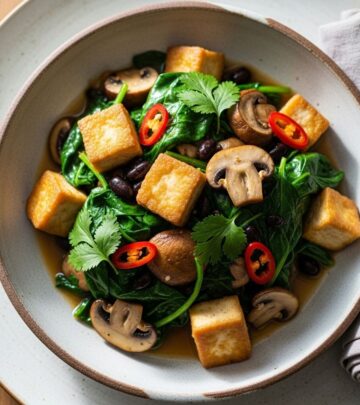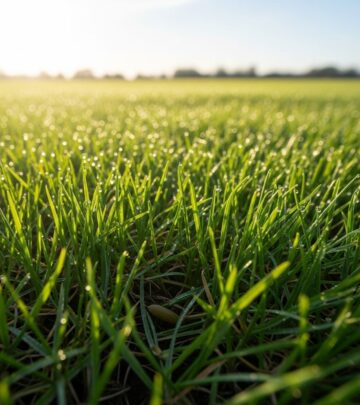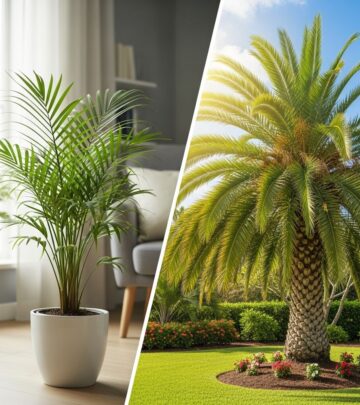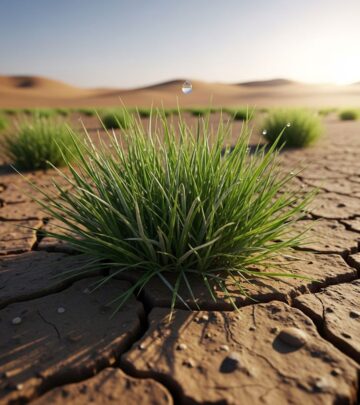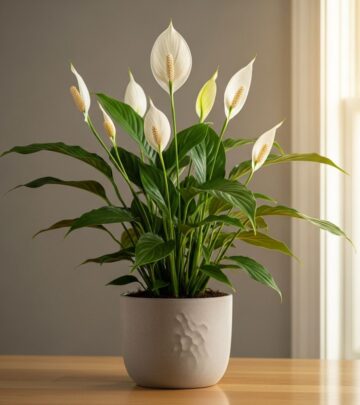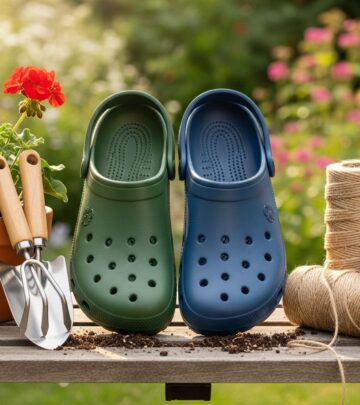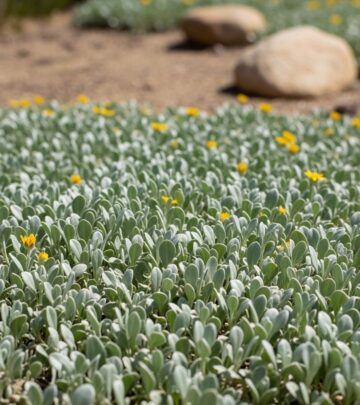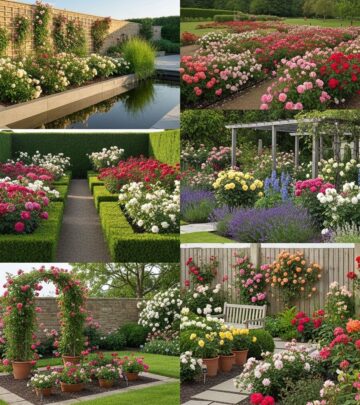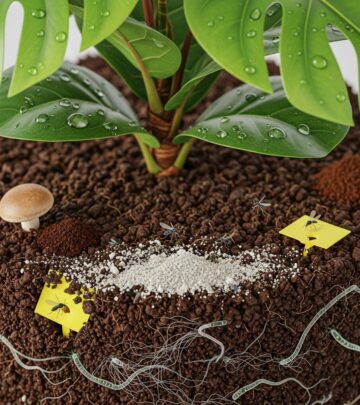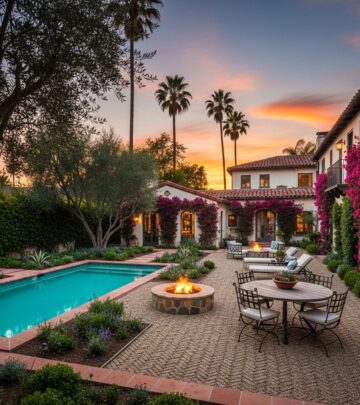Green Roof Benefits: 7 Key Advantages For Urban Buildings
Transform your rooftop into a vibrant ecosystem that benefits both your home and the environment
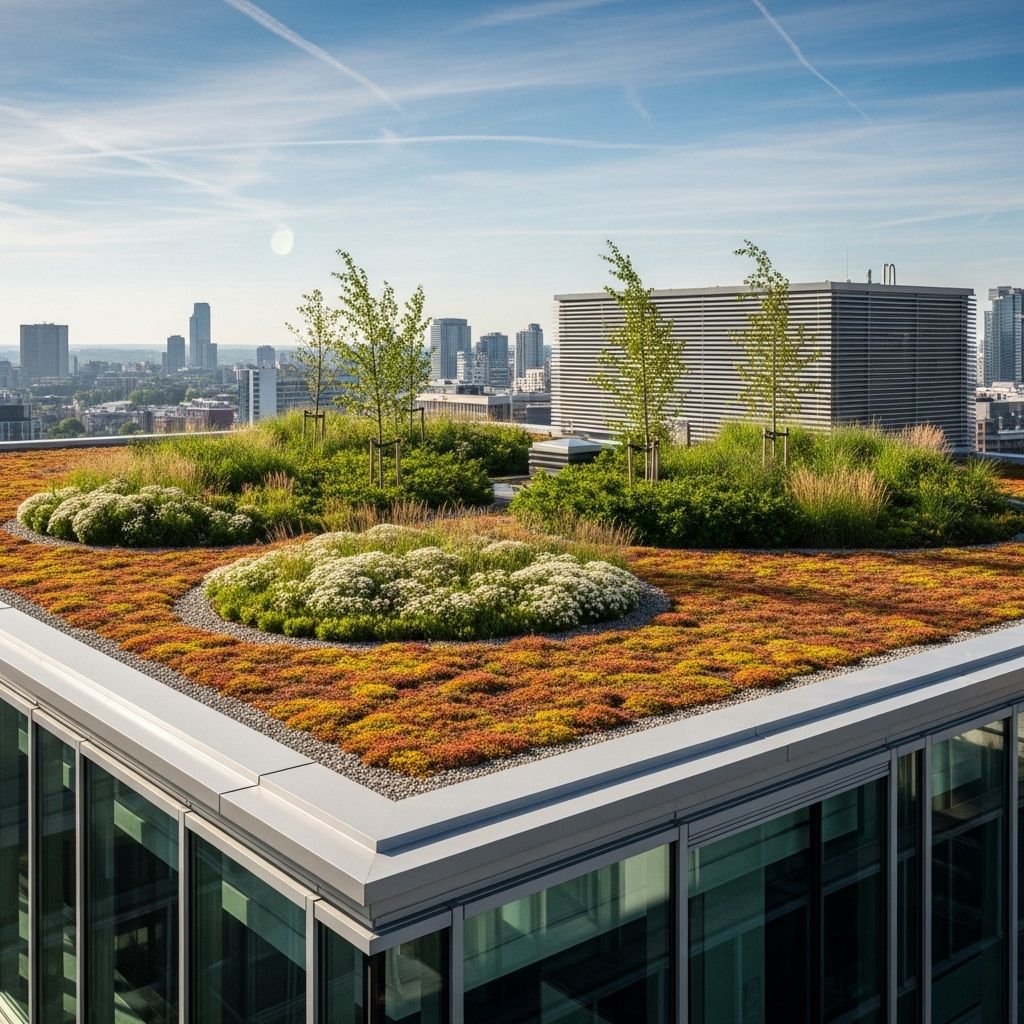
Image: HearthJunction Design Team
Understanding Green Roofs: Nature’s Canopy for Urban Buildings
Green roofs, also known as living roofs, represent one of the most innovative approaches to sustainable architecture in our increasingly urbanized world. These engineered ecosystems consist of vegetation planted over a waterproofing membrane, often including additional layers such as a root barrier, drainage system, and irrigation. Far from being merely decorative, green roofs offer substantial environmental, economic, and social benefits that make them an increasingly popular choice for both residential and commercial buildings.
As urban areas continue to expand, replacing natural landscapes with concrete and asphalt, green roofs provide a practical solution to mitigate many environmental challenges. They transform otherwise unused roof space into vibrant, functioning ecosystems that work harmoniously with the building structure below while creating a more sustainable urban environment.
The Environmental Benefits of Green Roofs
Green roofs deliver multiple environmental advantages that contribute significantly to urban sustainability efforts. These living systems work continuously to improve our surroundings in ways that conventional roofing materials simply cannot match.
Stormwater Management
One of the most significant environmental benefits of green roofs is their ability to manage stormwater effectively. In urban areas, where impervious surfaces dominate, rainwater typically flows directly into storm drains, often overwhelming municipal systems during heavy rainfall events. Green roofs, however, can absorb between 50-90% of rainwater that falls on them, depending on the depth of the growing medium and plant selection.
This absorption capability creates a valuable rainwater buffer, delaying the discharge to sewage systems and reducing peak load during storms. The plants and substrate act as natural filters, improving water quality by removing pollutants before the water eventually reaches the ground. By reducing runoff volume and velocity, green roofs help prevent urban flooding and contribute to stabilizing groundwater levels.
Air Quality Improvement
Green roofs actively contribute to cleaner urban air. The vegetation captures airborne particulates and filters harmful gases, while simultaneously converting carbon dioxide into oxygen through photosynthesis. A single square meter of green roof can filter approximately 0.2 kg of dust and smog particles annually, making a substantial difference in highly polluted urban environments.
Additionally, the evapotranspiration process from plants helps cool the surrounding air, creating microclimates that can reduce the concentration of pollutants in the immediate vicinity. This natural air purification system works continuously, improving the quality of life for urban residents without consuming additional energy.
Urban Heat Island Mitigation
Cities typically experience higher temperatures than surrounding rural areas due to the urban heat island effect—a phenomenon caused by heat-absorbing materials like concrete and asphalt, along with heat-generating human activities. Green roofs help counteract this effect by replacing heat-absorbing surfaces with vegetation that cools through evapotranspiration.
Studies have shown that green roofs can reduce ambient temperatures by 3-7°C compared to conventional roofs. When implemented across multiple buildings, they can collectively lower a city’s overall temperature, reducing energy demands for cooling and creating more comfortable outdoor environments during hot weather.
Biodiversity Support
Perhaps one of the most overlooked benefits of green roofs is their contribution to urban biodiversity. As natural habitats continue to diminish due to urbanization, green roofs provide valuable refuge for various plant species, insects, birds, and other wildlife. They create stepping-stone habitats that help connect fragmented natural areas across urban landscapes.
Particularly when planted with native species, green roofs can support pollinators like bees and butterflies, which are essential for ecosystem functioning. Even small-scale installations can contribute meaningfully to biological diversity in otherwise barren urban environments.
Economic Advantages of Green Roofs
Beyond their environmental benefits, green roofs offer compelling economic advantages that make them increasingly attractive to building owners and developers. Though the initial installation cost may exceed that of conventional roofing, the long-term financial benefits often outweigh this initial investment.
Extended Roof Lifespan
Traditional roofing materials are constantly exposed to ultraviolet radiation, temperature fluctuations, and physical damage from weather, leading to deterioration over time. Green roofs provide a protective barrier that shields the waterproofing membrane from these damaging elements, significantly extending the roof’s lifespan.
While conventional roofs typically need replacement every 15-20 years, properly maintained green roofs can last 40-50 years or even longer. This longevity translates to reduced replacement frequency and substantial cost savings over the building’s lifetime.
Energy Efficiency Improvements
Green roofs serve as natural insulators, reducing heat transfer through the roof during both hot and cold seasons. The soil substrate and plant layer provide additional thermal mass that moderates temperature fluctuations inside the building.
During summer months, green roofs can reduce cooling demands by 25-75% through shading, insulation, and evaporative cooling. In winter, they add insulation value that reduces heat loss. These thermal benefits translate directly into energy savings, with buildings featuring green roofs typically consuming 15-30% less energy for temperature control compared to buildings with conventional roofing.
Property Value Enhancement
As sustainability becomes increasingly important in real estate markets, green roofs can significantly enhance property values. Buildings with green roofs often command premium prices and rental rates due to their aesthetic appeal, energy efficiency, and environmental credentials. Commercial properties with accessible green roofs can particularly benefit, as these spaces provide amenity value similar to ground-level gardens or parks.
Additionally, green roofs can help buildings achieve certifications such as LEED (Leadership in Energy and Environmental Design), further increasing market value and attractiveness to environmentally conscious buyers or tenants.
Types of Green Roof Systems
Green roof systems fall into three main categories, each with distinct characteristics that make them suitable for different applications and building types.
Extensive Green Roofs
Extensive green roofs feature a thin growing medium (typically 3-6 inches deep) that supports drought-resistant plants like sedums, mosses, and other low-growing species. These systems are lightweight, relatively low-cost, and require minimal maintenance once established.
Key characteristics of extensive green roofs include:
- Lightweight structure (15-25 pounds per square foot when saturated)
- Limited plant diversity focused on hardy, drought-tolerant species
- Minimal irrigation requirements after establishment
- Generally not designed for regular human access
- Lower installation and maintenance costs
Extensive systems are particularly suitable for retrofitting existing buildings with limited load-bearing capacity and for large-scale commercial applications where maintenance access may be limited.
Intensive Green Roofs
Intensive green roofs feature deeper soil profiles (8-12+ inches) that can support a diverse range of plant life, including shrubs, small trees, and even vegetable gardens. These systems effectively create rooftop parks or gardens and typically require regular maintenance.
Key characteristics of intensive green roofs include:
- Substantial weight (35-100+ pounds per square foot when saturated)
- Wide variety of possible plantings, including ornamental species
- Regular irrigation and maintenance requirements
- Designed for human recreational use and access
- Higher installation and ongoing maintenance costs
Intensive systems are ideal for new construction projects where structural support can be incorporated into the design, and for buildings where the green roof will serve as amenity space for occupants.
Semi-Intensive Green Roofs
Semi-intensive systems represent a middle ground, with medium-depth growing media (6-8 inches) that can support a wider variety of plants than extensive systems while requiring less structural support and maintenance than fully intensive installations.
These hybrid systems offer flexibility in design and can incorporate both low-maintenance areas and more diverse plantings in strategic locations. They provide many of the benefits of intensive systems with more modest structural requirements and maintenance needs.
Essential Components of a Green Roof
Regardless of type, all green roof systems share certain fundamental components that ensure proper functioning and protect the building structure beneath.
Structural Support
The building must be capable of supporting the additional weight of the green roof system, including plants, growing medium, water retention, and any additional features like walkways. Professional structural assessment is essential before installation to ensure safety and compliance with building codes.
Waterproofing Membrane
A high-quality, durable waterproofing layer forms the foundation of any green roof system. This membrane must maintain its integrity under constant moisture exposure and potential root penetration. Modern green roof waterproofing typically consists of modified bitumen, EPDM, TPO, or PVC materials specifically designed for green roof applications.
Root Barrier
This protective layer prevents plant roots from penetrating the waterproofing membrane, which could lead to leaks and structural damage. Root barriers are typically made of dense polyethylene or similar materials that physically block root growth.
Drainage Layer
Proper drainage is critical to prevent waterlogging and excess weight on the roof. The drainage layer typically consists of granular materials or specialized plastic drainage panels with channels that direct excess water toward roof drains while retaining enough moisture for plant health.
Filter Membrane
This geotextile layer prevents fine soil particles from washing into and clogging the drainage system while allowing water to pass through. It effectively separates the growing medium from the drainage layer beneath.
Growing Medium
Unlike conventional garden soil, green roof growing media are specially engineered lightweight mixes that balance water retention, drainage, and aeration while providing necessary nutrients for plant growth. These typically contain a mix of inorganic materials (expanded shale, clay, or volcanic rock) and organic components.
Vegetation
Plant selection depends on the green roof type, climate, and design goals. Successful green roofs use plants adapted to the harsh rooftop environment, where conditions can include extreme temperatures, high winds, and limited soil depth.
Maintenance Considerations for Green Roofs
While green roofs require less maintenance than many ground-level gardens, they do need regular care to thrive and function properly. Maintenance requirements vary significantly based on the type of system installed.
Extensive green roofs typically require minimal intervention after establishment, with maintenance visits 2-3 times per year to remove unwanted vegetation, check drainage systems, and address any bare patches. Intensive systems, however, need regular attention similar to ground-level landscaping, including irrigation, fertilization, pruning, and weed control.
Regardless of system type, all green roofs benefit from regular inspections of drainage outlets, waterproofing edges, and other technical components to ensure the system’s integrity and prevent potential issues from developing into costly problems.
Frequently Asked Questions About Green Roofs
Q: Are green roofs suitable for all buildings?
A: Not all buildings can support green roofs without modification. The structure must be capable of bearing the additional weight, particularly when the system is saturated with water. Extensive systems with lightweight growing media can sometimes be installed on existing buildings, while intensive systems typically require purpose-built structural support. A structural engineer should always assess the building before installation.
Q: How much maintenance do green roofs require?
A: Maintenance needs vary by system type. Extensive green roofs typically require 2-3 maintenance visits annually to check drainage, remove unwanted vegetation, and address any issues. Intensive systems with diverse plantings need regular care similar to ground-level gardens, including watering, weeding, fertilizing, and pruning. All systems require periodic inspection of technical components like drainage outlets.
Q: What types of plants work best on green roofs?
A: The best plants for green roofs depend on the system depth, local climate, and maintenance capacity. Extensive systems typically use drought-tolerant, shallow-rooted species like sedums, sempervivums, and certain grasses. Intensive systems can support a wider variety, including perennials, shrubs, and even small trees. Native species adapted to local conditions often perform best while supporting local biodiversity.
Q: What is the return on investment for a green roof?
A: While installation costs exceed conventional roofing, green roofs typically offer positive ROI through extended roof lifespan (2-3 times longer than conventional roofing), reduced energy costs (typically 15-30% savings), stormwater management benefits, and potential increases in property value. Many jurisdictions also offer incentives that improve the financial equation further.
Q: Can green roofs be installed on sloped surfaces?
A: Yes, green roofs can be installed on slopes up to about 30 degrees, though pitches above 20 degrees typically require additional stabilization measures such as grids, baffles, or terracing to prevent soil erosion and slippage. Steeper slopes generally favor extensive systems with their lighter weight and simpler maintenance requirements.
References
- https://www.gsa.gov/governmentwide-initiatives/federal-highperformance-green-buildings/resource-library/integrative-strategies/green-roofs
- https://www.sempergreen.com/en/solutions/green-roofs/green-roof-benefits
- https://www.greenroofers.co.uk/green-roofing-guides/advantages-disadvantages-green-roofs/
- https://www.chicagobotanic.org/research/building/green_roof
- https://bkvenergy.com/blog/green-roof-benefits/
Read full bio of Anjali Sayee


